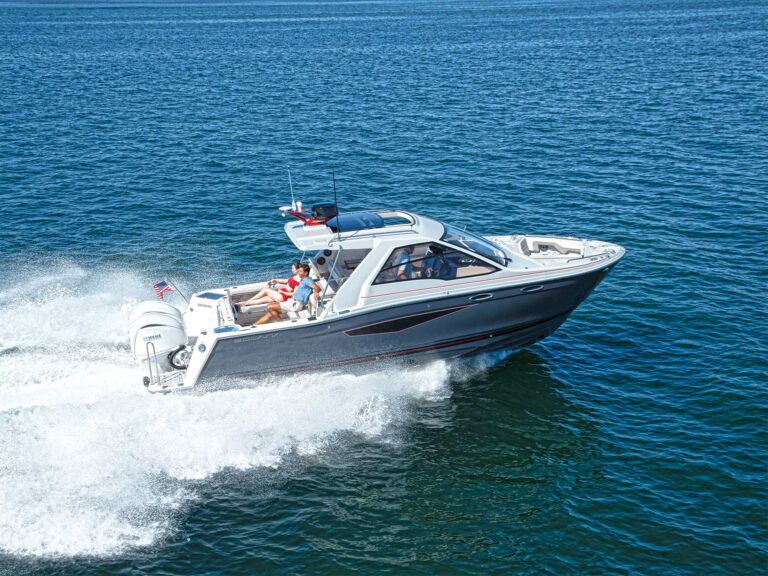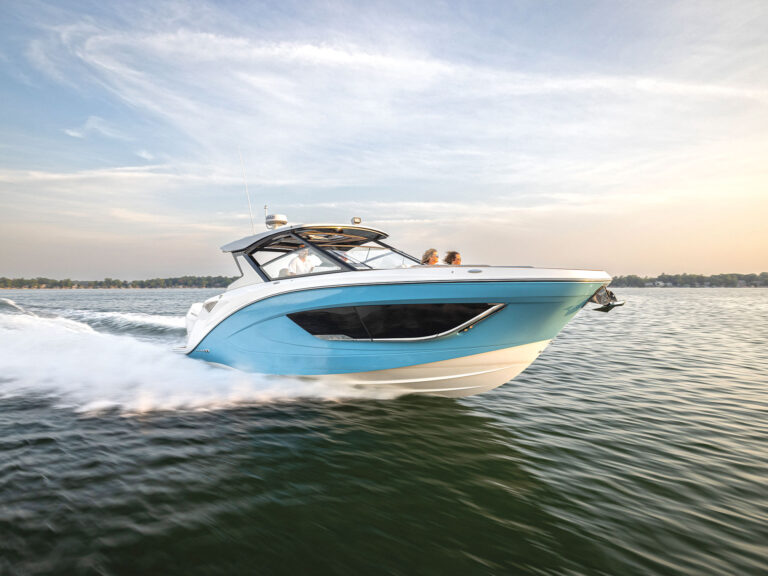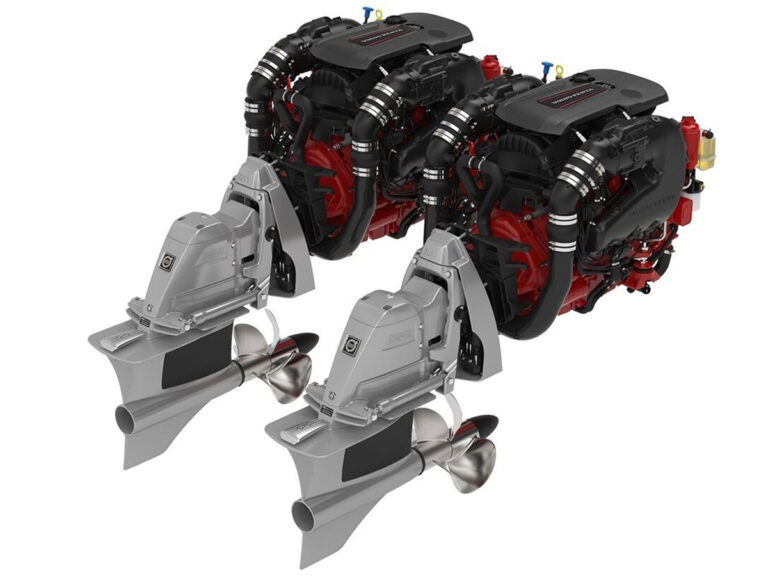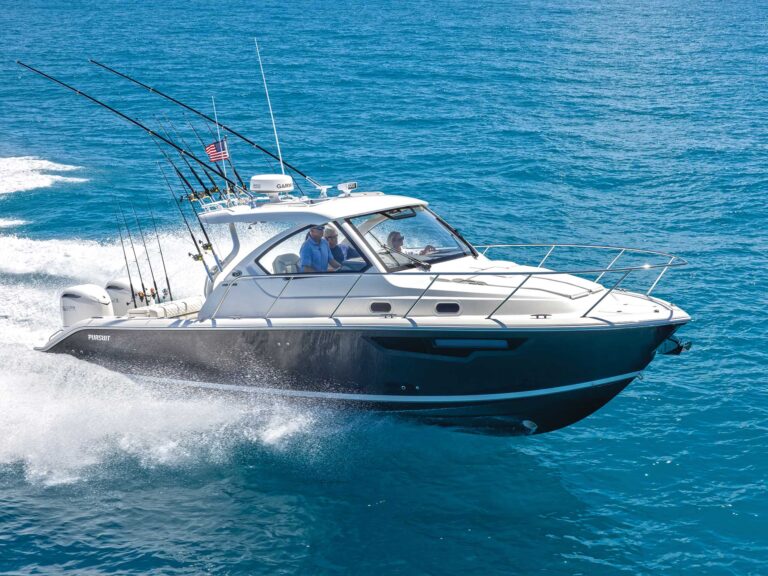Here’s when you realize you’re not just fishing: Something strikes the bait under the starboard kite with deadly ferocity. The angler on deck hesitates a second too long before the captain shouts down from the bridge, “Somebody get on that *&%$# rod!” The angler runs over, closes the bail, and reels down for all he’s worth. That is, until a bull dolphin breaches, exposing its electric green colors. In a moment of reverie the angler stops reeling to admire the display, but all it gets him is more admonishment. “Get that fish in,” the captain screams. “You’re costing us money!”
This is what happens when you’re fishing a high-roller sailfish tournament, and dolphin don’t count. The crew knows that every sail caught and released takes them one step closer to the $100,000 prize – and whatever other unspoken money may be passing hands. Everything else is a waste of bait. This is the World Sailfish Championship in Key West, Florida – high-stakes fishing at its core. But it’s also where those with deep pockets work and play at the same time, getting deals done and earning bragging rights. And above all, it’s a place where type-A personalities collide.
Into the Fray
The boats are lined up and ready to go before sunrise, waiting for the Bimini Start. It’s a sportfishing armada, with an impressive array of boats from top-of-the-line builders all concentrated in a small swath of water. I do a quick count – 20 boats immediately surrounding ours – and guesstimate that I’m looking at more than $50 million worth of fiberglass. “That’s a lot of F-U money,” says the first mate, preparing the cockpit as sunlight creeps in. Money that owners use instead of an upright middle finger, telling the world, “I got mine.” The battlewagons are so numerous that the few $250,000 center consoles, top-notch boats to be sure, look pedestrian by comparison.
I am on Black Pearl, a custom-build from Brazil worth $2 million. I’m fishing with the team from Cortex Resorts, a real estate group that builds waterside vacation resorts and condos throughout Florida. There are 12 of us onboard, though only six are registered as tournament anglers. Graciously, they give me first shot at the rods.
The captain and crew have checked in with buddies in the tournament, allies of sorts, to find out where fish might be biting. The captain sets a course and we head south and east out of Key West to a spot where several sails were caught in preliminary ventures. We arrive to set up our spread – four lines in the water maximum – and find we’re not alone. No spot in a tournament with 110 boats can truly be a secret. A quick look in either direction reveals boats as far as the eye can see along the color change. Glance up and the sky is peppered with kites, used to suspend live bait just beneath the surface behind the boats. The mood onboard is collegial. Ralph, the affable director of sales for Cortex, is entertaining everyone with loud and humorous stories. Scott, who handles public relations, makes sure everyone has anything they could possibly need. Everett, one of the owners of the company, sits talking with a group from a large hotel chain, potential investors in Cortex’s Florida properties. He’s laid back and jovial and seems quite content to spend the next eight hours at sea.
At first, everyone is interested in the activity in the cockpit, watching the mates work the lines and play out the kites. But then people start making their way in and out of the well-appointed air-conditioned cabin, and up and down the ladder to the settee on the flying bridge. Now the only ones truly focused on the fishing are the mates.
I think to myself, “Where have I felt this atmosphere before?” Then I realize this is exactly like sitting in a corporate luxury box at a big-time sporting event. This boat, with all its amenities, serves the same purpose, allowing executives to check out the action when they want to, then socialize and talk business during lulls. As I hear beer bottles being opened and jokes being told, I have to admit, it’s a hell of a lot better place to do business than a conference room.
** The New Golf**
Lines in at four. We’ve spent eight hours watching sails leap behind the transoms of other boats and contending with the pesky false albacore that keep eating our bait. They can be fun to handle on light tackle, but in this setting they do nothing but waste the crew’s time. Time spent clearing the lines is time not catching a sailfish – something that eludes us on day one. The captain and mates are stressed, frustrated, and will no doubt lose sleep tonight figuring how to change our luck. But Everett has the same relaxed and contented demeanor as when the day started.
We head back in to the giant tents that are set up for the tournament in downtown Key West. Here, sponsors large and small announce their presence. From boatbuilders to fishing tackle companies to real estate companies (including Cortex) to financial institutions – it reminds me of the corporate tents at a golf tournament. Not at all surprising.
“Catching a billfish is becoming the new golf as far as the corporate world is concerned,” says David Powers, who works for the World Sailfish Championship. And why not? You get the manly mythology surrounding offshore fishing – grizzled Hemingways battling big pelagics by day and hitting the bars at night. Something you don’t get when wearing pink pants and riding in a golf cart.
And these guys know how to party. A night after fishing makes your typical PGA affair look more like the PTA. In this setting, lubed by alcohol and the anything-goes mentality that permeates Key West, truly anything goes. Including the money, which flows as freely as the Coronas.
It takes big bucks to be part of a tournament like this. The entry fee is $4,300 per boat, for as many as six registered anglers. The majority of the participants aren’t from Key West, so they have to pay their crew and the large fuel bill to get their boat south. They have to provide room and board for the crewmembers and run an account for the social activities that run rampant in a place like this. The more serious anglers prefish the tournament every day for as many as two weeks. Add up the daily fuel bill, the bait bill (a dozen goggle eyes, the live bait of choice, cost well over $100), the ice bill, the maintenance bills-it can cost a team tens of thousands of dollars.
“It’s not an insignificant endeavor,” says Powers, who claims that more than 300 millionaires participated in or attended the event. Then I think back to Everett, who seemed so at ease despite shelling out thousands of dollars to entertain so many people during the tournament, despite the fact that we didn’t catch a single meaningful fish. It’s all summed up in his quote, listed prominently on the World Sailfish Championship Web site (www.worldsailfish.com): “After some preliminary contact, we invited a qualified group of prospects to the tournament and sold 32 units totaling $68,000,000.”
Big Money, Big Players
Day two, we’re on the water before first light, making speed to a more distant spot where the bite might be better. The captain and two mates have determined looks on their faces, resolved to do anything to start catching sailfish. If I needed any evidence that the people entered into this tournament take winning seriously, I have it right in front of me.
It comes down to this: Fishing is first and foremost a leisure sport. The people who buy the big boats and travel long distances to pursue billfish may get into it for that reason, but they made the money needed to do it because they are competitive. Enter these people into a high-stakes tournament and the Zen-like euphoria comes not from the act of hooking and landing a fish itself, but of hooking and landing enough fish to outdo the guy in the next boat. This is serious business.
We set up among a small cotillion of boats, and bam!, we’re the first to hook up. But it’s dolphin. An investor, first on the rods today, is the angler who draws the ire of the captain. But he fights the big bull until it comes boatside, where one of the mates gaffs it and throws it unceremoniously into a fishbox. For the investor, this was thrill enough. The kit goes airborn again immediately.
We still haven’t cured our goose egg, while a rival entrant, Vitamin Sea Too, is on its way to catching 14 sails, enough to win the tournament. The owner of that boat, Tim Maddock, is a lot like his fellow competitors. He runs a family-owned company that manufactures diamond saw blades. When he’s not doing that, he’s tournament fishing – he and the same crew, six in all, fish 10 tournaments a year.
His is as close to a professional team as any of the professionally sponsored teams entered. These guys are far removed from the weekend warrior set, more in line with a nascar pit crew.
“You try to put a bunch of guys together where everybody’s capable of doing everything, and when the fire alarm goes off, everyone falls into place,” says Maddock. Because missing just one fish could mean the difference between a six-figure check and nothing.
The irony of this is that to be able to compete for that check, you almost have to not need it. Take Maddock. “The tournament cost me 50 grand to fish,” he says. “If you’re in these tournaments to make money, take up something else.”
Yes, given the considerable investment, it’s too bad there’s not more at stake than the official prize money. Which is surprising, as a lot of the anglers act as if there might be. Of course, nobody talks about the Calcutta, which technically doesn’t exist. But if it did – nudge, nudge, wink, wink – it would be referring to bets made on the side that could total tens of thousands of dollars a day. As I said, everyone assures me it doesn’t exist. Ask anyone on any dock and you’ll hear, “Calcutta, what’s that?” Maybe it is just the pure sport of fishing that brings out each angler’s competitive nature. At least officially, that’s the storyline.
The competitiveness also spills over to the $500-a-plate charity auction at Shula’s Steakhouse, where the guest of honor is none other than Don Shula, the legendary former football coach of the Miami Dolphins, who runs one of the charities. The bidding starts on autographed footballs, baseballs, and other memorabilia. The wife of one of the heavy hitters jumps up with checkbook in hand. Then the next one. Then the next, in rapid succession. In 27 minutes, the auction raises more than $100,000.
Back at the docks, at the end of the last day, Black Pearl’s crew has no chance of being in the running for the tournament’s hundred grand. Of the 110 boats that caught and released 391 sailfish, none brought in enough to top the Vitamin Sea Too. But no one seems too concerned. If enough handshakes were made in the air-conditioned cabins of the other multimillion-dollar battlewagons out there, a lot of people figure they still won.









